When traveling abroad and when backpacking or camping in the backcountry, it’s crucial to have a travel water filter system you can rely on. The best systems we’ve found use gravity to do most of the work, but there’s an abundance of choice. Which travel water filter system is right for you? Read our side by side comparison!
Table of Contents
Katadyn BeFree gravity system:
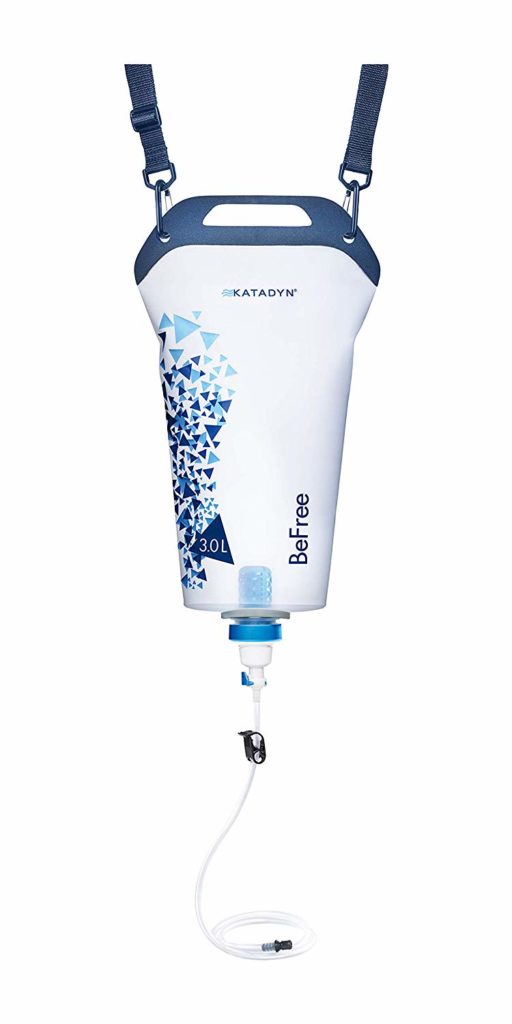
The simplicity of a gravity-based filtration system makes them reliable, plus these systems are lightweight, easily packable, and versatile for a large group or family. The Katadyn Gravity BeFree 3.0 L filter fits this bill perfectly. It’s extremely easy to use: you just fill the reservoir and hang it using the included rugged bail handle and carry loop, and wait for it to filter at an impressive two liters per minute.
When you’re not using it, the filter packs down small; it collapses and then can be rolled tight, fitting easily into a day bag, backpack, or carry-on bag. It’s been tested to protect against harmful organisms, removing protozoa (99.99%) and bacteria (99.9999%), which means it meets EPA standards, so not only can you bring the Katadyn filter along on your next backpacking or kayaking adventure in the US, but it works well for trips abroad as well, when you need to be assured of potable water. Note that it does not meet standards for virus removal; it’s to ensure safe drinking water against bacteria only.
This filter is BPA-free of course, and the wide-mouth opening makes it easier to fill than most. I’ve learned this the hard way with other bladders, when trying to awkwardly fill them in shallow streams, hard to access lakes, or bubbling springs. I did notice that it was easier to fill the bladder by using a second container, such as a backpacking cooking pot or cup to help feed the water into the reservoir.
You should clean the Katadyn filter occasionally, which is simple: just shake or swish to remove debris. We actually do this every trip, and it’s worked out very well. So far, this filter has come along with us on a front-country and backcountry combination trip to Mt. Katahdin in Maine as well as a backpacking trip through Central America. Next, it will accompany my son through Indonesia.
You can pick up the Katadyn Gravity BeFree online at the official Katadyn site or Amazon for $69 for the 3L option.
LifeStraw Flex with Gravity Bag:
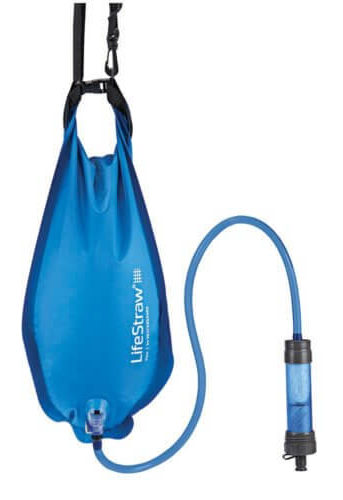
Pair the confidence you already have in LifeStraw with the convenience of filtering a gallon of water at a time. You get next-level protection against heavy metals including lead as well as bacteria, parasites, microplastics, and organic chemical matter like pesticides, and herbicides, all in an ultralight system. The whole thing only weighs 6 ounces, and can filter one liter every two minutes. As always with LifeStraw, when you buy a product, you give a product to one school child (one year of clean water).
It works in the same manner as other gravity-based systems: just fill the bag, hang, add the filter, and allow the water to drip through the filter and into your water vessel whenever you need it. Alternatively, you can use the LifeStraw filter individually like you would any LifeStraw, which is a nice bonus of versatility. Pick up the system for only $54, a great value.
Platypus GravityWorks:
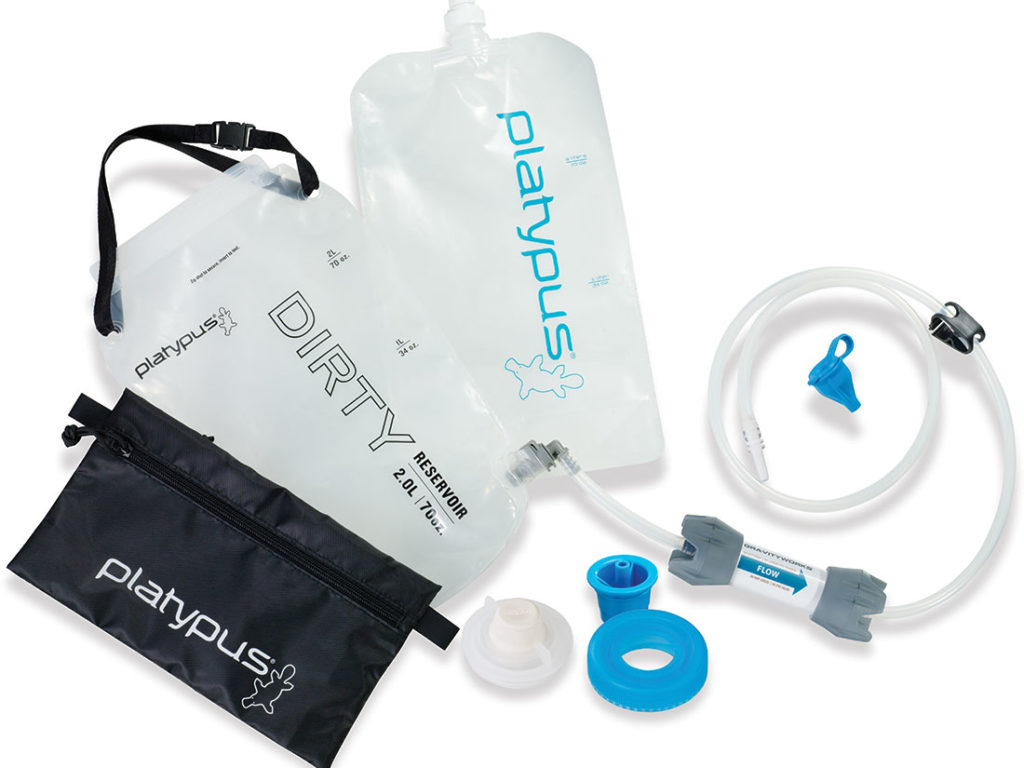
The GravityWorks system is similar to that of the LifeStraw and Katadyn varieties, but it involves two bladders instead of one. This can be a pro or a con: on one hand, the system is slightly heavier and bulkier to pack, but on the other, you have a dedicated clean-water bladder to use in a variety of ways, storing clean water and carrying it to your next backpacking location, for instance.
You can choose between a 2 liter and 4 liter kit (I like the 2 liter). Just fill the ‘dirty water’ bladder with lake, stream, or iffy hotel water, then attach the included hose and filter system between it and the dedicated clean water bladder. Hang the dirty water bladder higher (hence the use of gravity), and wait for your water to fill the bladder. The disadvantage to this system is that you have to wait for the clean water bladder to completely fill, which can take a matter of about 20 minutes. With the other systems, you can have water on demand, though you might have to squeeze the bag a bit if you’re impatient.
With the GravityWorks system, you get extra parts, including a universal bottle adapter. Pick up the Platypus GravityWorks on Amazon for $99.
Sawyer Squeeze:
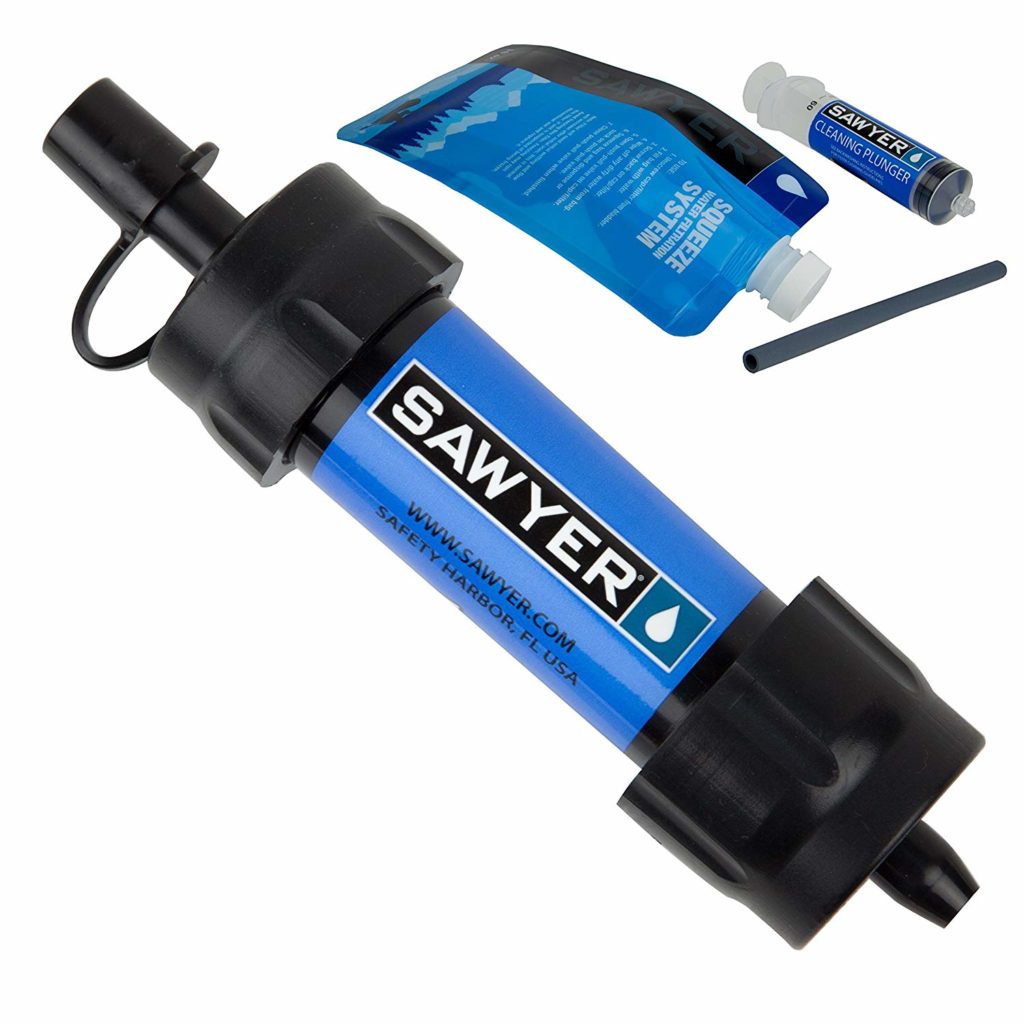
It’s small, it’s easy to carry, and it’s cheap: the Sawyer Squeeze is a super simple system that involves a bag (bladder) plus a small filter. You fill the bag with water and squeeze it through the filter and into your water vessel. You can get bags in various sizes (the smaller ones are only $12) so this can still work for a family or group, but it will be slower going. I like to have a Sawyer Squeeze in my day pack as an extra filter, just in case. Pick one up on Amazon.
Grayl GEOPress:
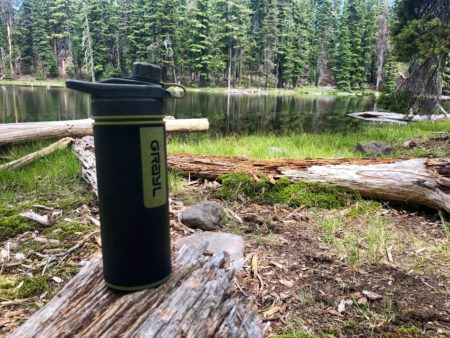
Another individual travel water filter system, the Grayl is by far the easiest to use, if you don’t like drinking through a straw. You just scoop up water from a creek, lake, river, or faucet, then press the filter down through the water vessel like you would a French press coffee container. It takes about ten seconds and while you do need to use some force, if you have a sable surface, it’s easy.
Once you’ve filtered your water, you’re good to go. I don’t like drinking my filtered water from a straw if I can help it, so I really liked the design of the GEOPress, which allowed me to gulp instead of drink from a straw. With the GEOPress, you get 24 ounces of safe drinking water swiftly.
The water bottle is heavier and bulkier than I’d like (but they do have a slimmer, lighter version if you’re willing to reduce your ounces), but it’s worth it if you don’t have to also carry a water filter or pump with you. I love the ease of arriving at a river and just scooping up my water.
GEOPress protects from global waterborne pathogens (virus, bacteria, protozoan cysts), pesticides, chemicals, heavy metals, and even microplastics, so you’re getting the purest water possible. The cap has a fast-flowing drink spout that can be sealed closed, and vents air while purifying (unscrew the cap a bit when you’re filtering, or you’ll be hard-pressed (pun intended) to press down the filter).
Pick up a GEOPress in one of four colors for $89 (less than most filter systems) or opt for the smaller ultralight filter for $59.
LifeStraw Universal:
When we hike, we like to have Lifestraw filters in ALL our water bottles. Lifestraw Universal gives you just that: this kit sets you up with one filter (2-stage), two sized bottle caps, and one cap lid. We have used the kit to add a Lifestraw filter to our favorite water bottles, from a wide-mouth Nalgene to a narrow-mouth Camelbak. Details for the caps: the wide cap is 63 mm and the narrow cap is 43 mm. The filter height is 7.3 inches. You also get a carry bag.
As always, the filter does the following:
- Removes 99.999999 % of bacteria
- Removes 99.999 % of parasites
- Reduces organic chemical matter (pesticides, herbicides, VOCs)
- Removes 99.999% of microplastics
- Compatible with most water bottles
- Lasts 1,000 gallons
Now when we backpack or camp, everyone in our family can use a Lifestraw filter in their favorite water bottle, and I can travel with a filter in the bottle I love to use for international trips. The Universal kit is only $34, allowing you to switch out your filter from bottle to bottle at will. Pick up your kit on the Lifestraw website or at other online retailers, such as Amazon.
Tip: Lifestraw, Platypus, and Katadyn all carry their own versions of an individual water bottle with filter included. Find your favorite brand and buy a few extras to have in day packs when you travel!





